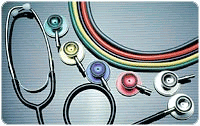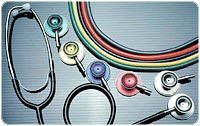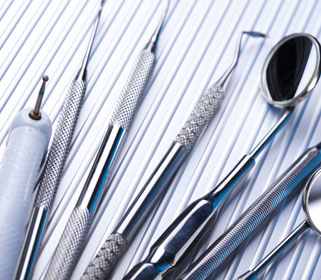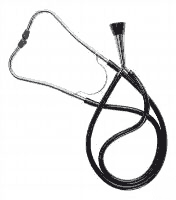Home » Hospital & Durable Medical Equipment » Sprague Rappaport Stethoscopes: The Beauty is in the Simplicity! » Sprague Rappaport Stethoscopes: The Beauty is in the Simplicity!
Sprague Rappaport Stethoscopes: The Beauty is in the Simplicity!

Color-Coordinated Dual-Head Stethoscope, Green
Retail Price: $8.02
Your Price: $6.42
 Unit: single
Unit: single

Color-Coordinated Dual-Head Stethoscope, Red
Retail Price: $8.02
Your Price: $6.42
 Unit: single
Unit: single
Stethoscopes have been around for centuries, and they have come a long way in their evolutionary history, but throughout the ages, they have always proven to be indispensable to those who offer medical health care. So prevalent are they in medicine, that the notion of a doctor or nurse without one seems an anathema. Perhaps the most commonly seen and used type is the acoustic Rappaport Sprague Stethoscopes. This two-sided stethoscope is one of the most advanced acoustic types, but its simplicity allows for these to be easy and quick to use. The versatility of the Sprague Rappaport Stethoscope also allows for its use in all ages and sizes of patients by the simple switching to another size chestpiece. Ease of use and simplicity of design are the hallmarks of these most evolved medical supplies required for daily use by providers.
From the time of the ancient Greeks until 1816, the only way that a doctor could listen to a patient's internal sounds was to put his ear directly on that part of the body. This could be an uncomfortable situation for male doctors examining female patients. A Frenchman named Rene Laennec realized this can created a device so that he could listen to the body without directly touching the patient. His device was a monaural stethoscope since it only had one ear piece. It was little more than a simple wooden tube. Some years later, in the 1850s, the biaural – or two eared – stethoscopes was invented. There might have been two ear tips, but there was still only one chestpiece which was a simple bell. This was suitable for listening for low frequency sounds, but for it still lacked the ability to ably detect high frequency sounds. In the early 1900s, a diaphragm was introduced to listen to those high frequency sounds that were missed by the bell, but the diaphragm was on a separate chestpiece from the bell. This meant that physicians would have to switch stethoscopes to hear the different sounds. Finally, in 1940 the Sprague Rappaport stethoscope was invented. Named after its two developers, the Sprague Rappaport stethoscope is characterized by its two sides, a bell and a diaphragm. The physician can switch between these for pinpointing various sounds by simply twisting the chestpiece around.
Unlike other instruments, the Rappaport Sprague stethoscope is so common that even pediatric patients are not frightened or upset by the sight or use of them. Interchanging chestpieces of varying sizes allow for the physician to better use their stethoscope with every patient, from the smallest infants to the largest adults. By having interchangable chestpieces, the provider can also pinpoint various sounds with better accuracy. This allows for the most precise diagnosis.
Use of a Sprague Rappaport stethoscope is almost intuitive. The earpieces are firmly placed into the ears and either the bell or diaphragm is selected. Twisting the chestpiece until hearing a click, will ensure that either the bell or diaphragm is in the correct position for listening. The diaphragm will be best for listening to high frequency sounds, especially when there are sounds of lower frequency that are interfering with proper detection. The bell is best for isolating low frequency tones.
Quality Sprague Rappaport stethoscopes are simple to use, offer tubing that blocks excess outside noise, comfortable eartips, and have a selection of chestpieces which are easily interchanged. Choices abound, but for the best in patient treatment, the practitioner should only equip himself with the best in medical equipment, including his Sprague Rappaport Stethoscope.















